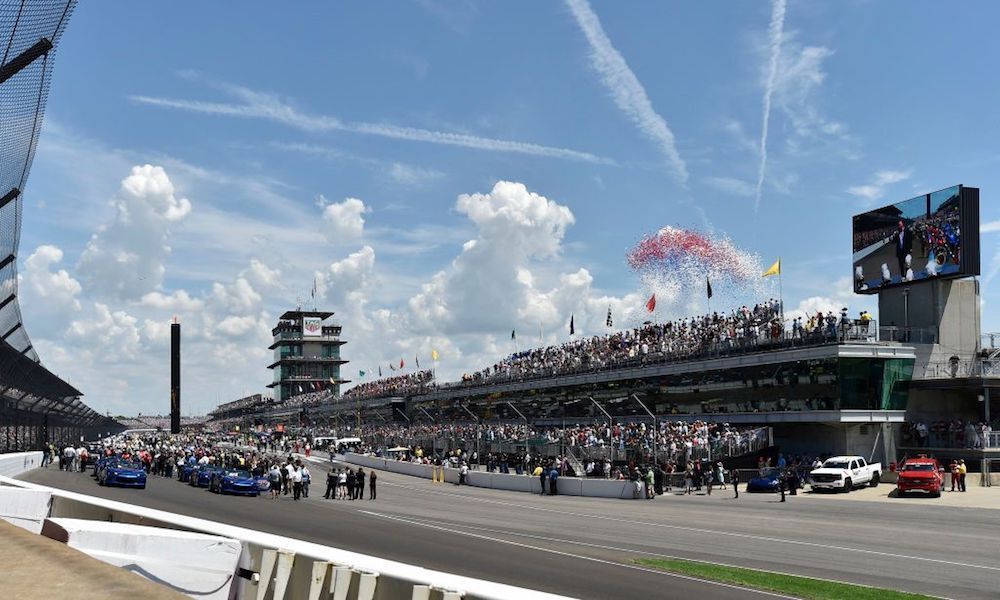 In 1979, a group of racing owners disagreed with the direction and leadership of USAC. They formed their own sanctioning body, the Championship Auto Racing Teams (CART). Led by car owners rather than a neutral body, CART established and sanctioned the Indy Car World Series. USAC continued to be the sanctioning body for the Indianapolis 500 and for other races in its championship series. USAC rejected entries from some CART owners that year, though they won a court injunction. Throughout the 1980s, USAC and CART ran competing world championship series, but many CART drivers continued to compete in the 500. Many teams defected from USAC, and for 1981-1982 the CART championship became the preeminent national championship. USAC stopped sanctioning any race except the 500, and CART ran the national championships.
In 1979, a group of racing owners disagreed with the direction and leadership of USAC. They formed their own sanctioning body, the Championship Auto Racing Teams (CART). Led by car owners rather than a neutral body, CART established and sanctioned the Indy Car World Series. USAC continued to be the sanctioning body for the Indianapolis 500 and for other races in its championship series. USAC rejected entries from some CART owners that year, though they won a court injunction. Throughout the 1980s, USAC and CART ran competing world championship series, but many CART drivers continued to compete in the 500. Many teams defected from USAC, and for 1981-1982 the CART championship became the preeminent national championship. USAC stopped sanctioning any race except the 500, and CART ran the national championships.
Prize money for USAC’s Indianapolis 500 made extraordinary leaps in the 1980s. The total purse in 1970 exceeded $1 million for the first time. It then topped $2 million in 1982, $3 million in 1985, $4 million in 1986, $5 million in 1988, and $6 million in 1989, at which time Brazilian winner Emerson Fittipaldi’s first-place prize alone exceeded $1 million.
By 1992, CART was encountering opposition to its organizational structure in the face of concerns about costs, competitiveness, and revenue sharing. The company rebranded as IndyCar, but it ultimately failed. In 1996, Anton Hulman “Tony” George, then IMS owner, founded Indy Racing League (IRL) as direct competitor of CART/IndyCar. IRL took control of the Indianapolis 500 and established its own oval-based racing series. IRL became dominant, and CART/IndyCar went bankrupt at the end of the 2003 season. Although three race team owners acquired its assets and tried to revive CART/IndyCar, it merged with IRL in 2008, reuniting the American open-wheeled racing circuit.
The 500 purses continued to build into the new century, the totals often fluctuating due to the amount of “contingency” prize money posted and earned. The current record for the overall race purse stands at $14,406,580, paid in 2008, while the record for the winner’s share is $3,048,005 earned in 2009 for the mighty team Penske by Helio Castroneves, the popular three-time winner from Brazil.
Attendance figures, although unofficial (the Motor Speedway does not release this information), are similarly impressive. The race is reputed to be the largest single-day sporting event in the world, with estimates of the crowd size in some years having exceeded 400,000.
As worldwide exposure of the 500 increased, hand in hand with technological advances, rising speeds, and increased involvement in recent years by both automotive and non-automotive international corporations, a variety of socially intriguing “firsts” have taken place. In 1977, the year in which A.J. Foyt became the first four-time winner, the field included its first female driver, Janet Guthrie. There have since been eight more, Danica Patrick having the highest finish with third in 2009. When Al Unser (later to join Foyt as a four-time winner) lined up against Al Unser Jr., in the 1983 race, it marked the first instance of a driver competing in a 500 against his own son. Back in 1937 Billy Devore had been the first second-generation driver to compete in a 500; in 1988 Billy Vukovich III followed in the footsteps of his father and grandfather to become a third-generation 500 driver.
In terms of four-time winners, there have now been three, Rick Mears (1979, 1984, 1988, 1991) joining Foyt (1961, 1964, 1967, 1977) and Al Unser (1970, 1971, 1978, 1987), while the record for a car entrant is an astonishing eighteen, by Roger Penske between 1972 and 2019. The three-time winning drivers have been: Louis Meyer (1928, 1933, 1936), Wilbur Shaw (1937, 1939, 1940), Mauri Rose (1941, 1947, 1948), Bobby Unser (1968, 1975, 1981), Johnny Rutherford (1974, 1976, 1980), Helio Castroneves (2001, 2002, 2009), and Dario Franchitti (2007, 2010, 2012).
For the 75th running in 1991, the field expanded its horizons still further by containing its first African American driver, Willy T. Ribbs, as well as its first from Asia, Hiro Matsushita from Japan. In 2017, it was a Japanese driver, Takuma Sato, who won. He won a second time in 2020. The field has included several Latin American drivers, including Fittipaldi and Castroneves. Efforts to improve diversity at the track, however, have been very slow.
Successful businessman and 18-time, 500-winning-car entrant Roger Penske acquired the Speedway in January 2020, becoming its fourth owner. In July 2020, following the Black Lives Matters protests that took place across the U.S. and in Indianapolis following the death of George Floyd in Minneapolis, IMS announced that it was embarking on an effort to “support diversity and inclusivity,” providing a $1 million fund called “Race for Equality & Change” to increase diversity across all portions of the Speedway’s working teams.
The Novel Coronavirus (COVID-19) pandemic caused the 2020 running of the 500 to be delayed from its traditional Memorial Day Weekend date to August 23, 2020. The race also ran without spectators in the grandstands.


